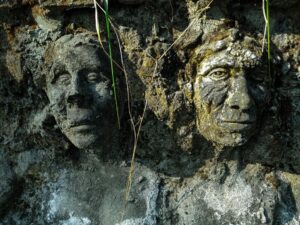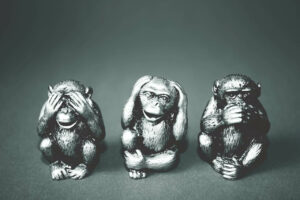Teddy Roosevelt’s Fearless Fisticuffs

Theodore Roosevelt, a name synonymous with courage and tenacity, has left an indelible mark on American history. In this exploration, we delve into the captivating life of a man known not only for his unwavering leadership as a President but also for his remarkable fearlessness in the face of adversity.
One of Theodore Roosevelt’s defining traits was his unwavering commitment to self-reliance. He firmly believed in the principle that one should never submit to any wrong, regardless of the cost, risk, or trouble involved. In a remarkable instance, when his boat was stolen during an ice storm by audacious thieves, he didn’t back down. Instead, he spent three days constructing a replacement boat, showcasing his resilience.
Undeterred by the freezing conditions and the vast wilderness, Roosevelt tracked down the culprits, demonstrating his masterful tracking skills. Rather than resorting to violence, he maintained a vigilant watch over the thieves during their arduous 40-hour march to the nearest town, ensuring their safety even in the harshest of circumstances.
What makes Theodore Roosevelt’s actions even more remarkable is his unwavering commitment to justice. He had every right to execute the criminals he was transporting, given the hostile terrain and the potential threat they posed. However, Roosevelt believed in the rule of law and opted for a trial instead, highlighting his dedication to fairness and justice.
In an extraordinary show of gratitude, one of the convicts even thanked Roosevelt for upholding the law. When it came to another thief, Roosevelt chose not to press charges, recognizing the capacity for good in people.
The story of Roosevelt’s resilience doesn’t end there. When he was shot in the chest at point-blank range on October 14, 1912, he remained unfazed. He delivered his scheduled 90-minute speech as planned, displaying an extraordinary level of fortitude. Only after his speech did he seek medical attention, and doctors found that the bullet had miraculously lodged in his chest muscle, sparing his life.
Roosevelt’s explanation for his delayed visit to the hospital was simple yet powerful – he wanted to face potential death with his boots on, a testament to his unyielding spirit.
Beyond his physical prowess, Theodore Roosevelt also championed civil rights. His invitation to Booker T. Washington for dinner at the White House on October 16, 1901, marked a significant milestone in American history. In an era of racial tension, this gesture stirred controversy and received harsh criticism from various quarters.
Newspapers carried scathing attacks against Roosevelt, highlighting the deep divisions in society. Still, Roosevelt remained resolute in his stance for equality. He shared this historic dinner with Booker T. Washington and earned accolades for his unwavering commitment to civil rights.
What You Didn’t Know About Theodore Roosevelt
- Theodore Roosevelt served as the Assistant Secretary of the Navy before resigning to join the Rough Riders, a volunteer cavalry regiment, during the Spanish-American War in 1898.
- He led the Rough Riders in the famous charge up San Juan Hill, earning notoriety for his bravery.
- During his presidency, Theodore Roosevelt became known for his trust-busting efforts and antitrust policies.
- He filed 44 antitrust suits against major corporations, breaking up monopolistic practices and promoting fair competition.
- Theodore Roosevelt was a fervent advocate for conservation and environmental protection.
- He signed into law the Antiquities Act of 1906, which allowed him to designate 18 national monuments and 5 national parks, preserving millions of acres of American wilderness.
- In 1906, Theodore Roosevelt became the first sitting U.S. President to receive the Nobel Peace Prize.
- He was awarded the prize for his successful negotiation of the end of the Russo-Japanese War, which led to the Treaty of Portsmouth.
- Roosevelt was an incredibly prolific writer and speaker throughout his life.
- He delivered over 150,000 letters, wrote 35 books, and made countless speeches, leaving behind a rich legacy of written and spoken words.
Positives Of His Willingness To Engage In Fist Fights
Theodore Roosevelt’s willingness to engage in physical altercations, when necessary, created a perception of fearlessness and strength. This image of a robust and courageous leader inspired confidence and respect among his followers and the public.
Roosevelt’s inclination to confront adversaries physically at times may have helped in resolving disputes more directly. It could have prevented issues from escalating and demonstrated his commitment to standing up for his principles. In an era when notions of masculinity were highly valued, Roosevelt’s readiness for physical confrontation resonated with the cultural ideals of the time. It reinforced the image of a rugged, manly leader who could protect and lead the nation.
Roosevelt believed in the virtues of physical fitness and self-discipline, which he cultivated through physical challenges. Engaging in fistfights may have contributed to his personal development and the development of strong character traits.
Risks He Took
Engaging in fistfights carried the inherent risk of situations escalating into violence, potentially causing harm to all parties involved. This approach could have had negative consequences, especially in diplomatic or political contexts.
While Roosevelt’s fearlessness was admired by some, it also raised questions about whether he set a good example for the nation’s youth. Some critics argued that his willingness to resort to physical confrontations did not align with the ideals of peaceful conflict resolution. Roosevelt’s readiness to engage in physical challenges might have been seen as reckless and impulsive. Such impulsiveness could have had unintended consequences and jeopardized his safety or reputation.
At times, Roosevelt’s inclination toward physical confrontation could have diverted attention from diplomatic or political solutions to issues. This could have hindered his effectiveness as a leader in addressing complex and delicate matters.
While his willingness to challenge others physically may have built his reputation as a strong leader, it also led to criticism and portrayed him as overly aggressive. This image could have alienated some segments of the population and international leaders.
His readiness to engage in confrontations, whether they involved physical altercations or intellectual discourse, showcased a deep commitment to his principles. This approach, while garnering support and admiration, also sparked debates about the appropriateness of such tactics. Ultimately, the legacy of this leader lies in the interplay between his fearlessness and the nuanced challenges of leadership in his time, leaving a lasting impression on the annals of history.







